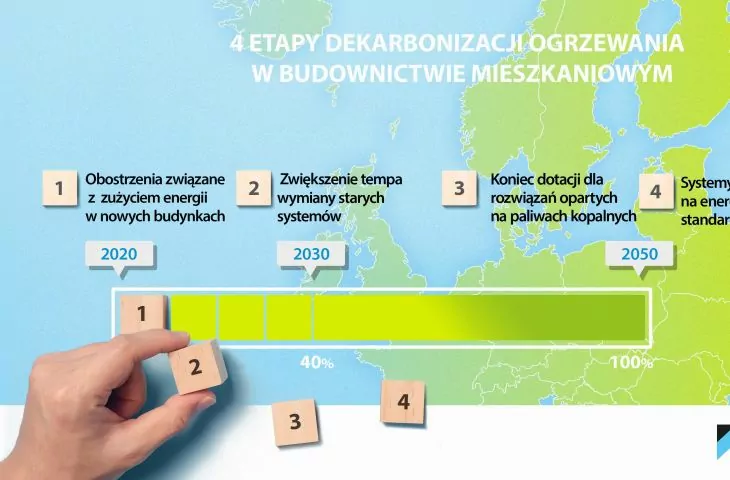Daikin unveils a four-step plan to transform residential heating and cooling for a greener Europe. The goal is to reduce carbon emissions from residential buildings by increasing the share of heating and cooling systems based on renewable energy sources to 40 percent by 2030. This is in line with the carbon reduction target raised from 40 to 55 percent by 2030, as enshrined in the European Climate Law on April 21.
key role of renewable heating systems
Most residential buildings are heated with outdated systems, often using fossil fuels such as coal and oil. Europe's building stock currently accounts for about 36 percent of all carbon dioxide emissions in the Union. In some European countries, renewable heating using heat pumps has become standard in new buildings, and the potential they offer calls for greater exposure to replacement. This observation stands in stark contrast to the EU's raised target of reducing emissions from 40 to 55 percent by 2030 in the recently signed European climate law.
A clear and affordable strategy for decarbonizing residential heating is needed, and renewable technologies play a crucial role in terms of achieving the new targets, especially when it comes to the replacement market. Daikin has adopted ambitious new goals and is taking the lead by coming out with a guide for a four-step residential heating transformation, says Patrick Crombez, General Manager of Heating and Renewables at Daikin.
4 steps to decarbonize heating in residential applications
The primary step in this new plan is to strengthen new regulations on energy use. Daikin now estimates that heat pumps already have a 50 percent market share in Europe's single-family new-build sector. Therefore, there must be a tightening of current rules to make heat pumps the standard.
The second step is to increase the rate of replacement. In order to achieve the goals of the European climate law, it is necessary to double the rate of replacement from 1 to 2 percent by 2030. By increasing the rate of replacement, replacement of old systems with more energy-efficient new systems is to occur, leading naturally to a reduction in emissions. Therefore, the new challenge is to motivate EU citizens to choose renewable energy solutions. This includes the need to explain more broadly that renewable heating systems, such as heat pumps, are an efficient, cost-effective and proven solution.
The third step is to eliminate incentives associated with the use of fossil fuels. Policy makers should avoid incentives for the use of fossil fuels. Currently, direct or indirect incentives suggest the superior benefits of oil or gas boilers over heat pumps. They are cheaper and more accessible, so renewable energy technologies also need a level playing field. The difference between current electricity and gas prices in many member states is too great for a heat pump to be affordable for all EU citizens.
The final step is to make renewable energy heating systems standard in replacement programs. Daikin believes that heat pumps are the best solution. Truly, they are increasingly capable of high efficiencies, even at lower outdoor temperatures. They are therefore suitable for use in any type of house or apartment. The use of renewable energy sources for home heating ensures a reduction in the consumption of polluting fossil fuels and carbon dioxide emissions.
clear action needed
Daikin's ambition is to achieve carbon neutrality globally by 2050. These four steps represent the most effective method for decarbonizing residential heat today, and Daikin is calling on all stakeholders to roll up their sleeves and join the movement. Daikin presents this method as the industry leader in green heating.
At Daikin, we are working every day to help make these four steps a reality. The technology is already there, our investments are in support. We are making sure that our installer community joins the movement. Heat pumps are the future in the replacement market, and it is our job to convince all stakeholders of this. All these signs indicate that we need to act now. Words are no longer enough, clear actions are needed. This is the only way we can make Europe's climate neutral by 2050," concludes Patrick Crombez.















